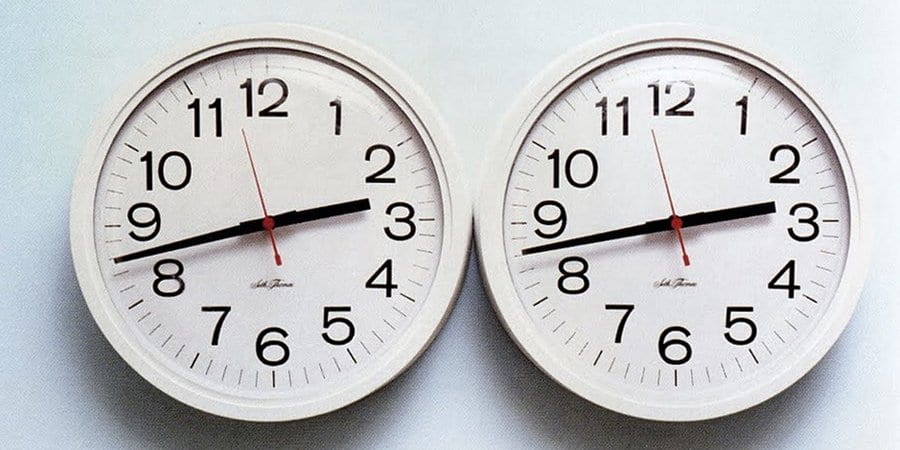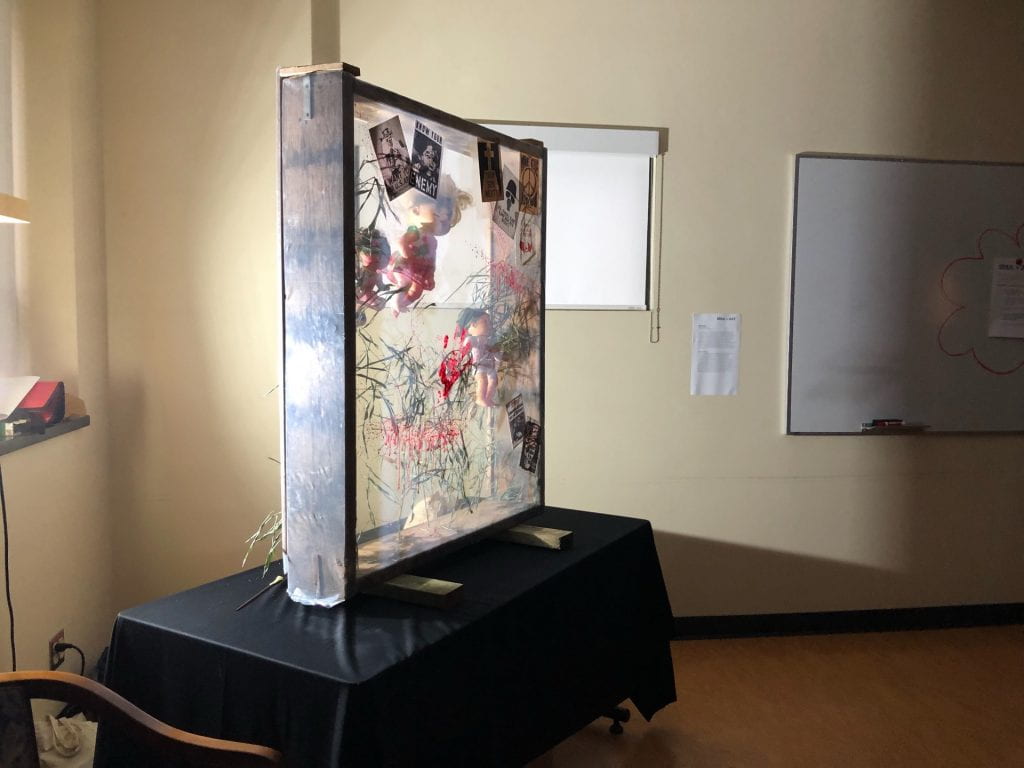Posted on June 27, 2019
Ideas > Art
It’s that time of year again! Blue Sky has come around once again. If you don’t know what Blue Sky is at this point, you’ve got some catching up to do. Click here, here and here for my past Blue Sky projects. This years theme was very interesting and unlike anything we’ve done before. Our end product would be a conceptual art piece that represented a theme of the Vietnam war. Take a look at my final project!
We begun this final unit by learning about conceptual art. Most people are intimidated by the idea of conceptual art, it almost seemed like a very mature form of art. At first glance conceptual art can seem dumb, or too simplistic (seems like a child could make it). Conceptual art is really about the meaning or idea behind the art, which makes it that much more interesting. Here’s a few famous examples (the clock one is my favourite)…
To become really comfortable with identifying the aspects of conceptual art we visited the Vancouver Art Gallery (and Chipotle… of course)! The artist we focused on was Mowry Bawden. His art is pretty easy to spot, it usually consists of everyday objects that create an interactive piece. Here’s a few examples of his art!
After we finished learning about conceptual art we began looking at the Vietnam war. We split the war into 7 themes (forces that fueled the war, beliefs and misconceptions, leadership, who fought, how the war was fought, propaganda truth and media and, the war at home) for the fluidity of it all. Our teachers were actually on a trip while we were learning about this, so we were given many different resources to power through. We also watched the Ken Burns movie on the war, and took notes. Before they got back we had to divide ourselves into the themes, which would eventually be what we would represent through our art. After lots of consideration and research I chose to do theme 4 (who fought in the war).
Once we got back we did something that we rarely do, take a test! This test was comprised of multiple choice questions as well as a writing and vocabulary portion. I ended up scoring a 9/12, so not too bad!
Now that we knew our themes, it was time to start brainstorming and creating our art. After lots of research and conversations with our teachers we were told to fill out a form with our finalized ideas. Click on the bar below to find out my aim for the art!
Building everything…
I began by going thrifting to buy some dolls, I found out in a very inconvenient way that one of them talked french (it was very creepy). I then created a 3×4 wooden shadow box, and was planning on covering it with plexiglass. After finding out plexi glass is like 150$ I decided to go down a different route. I found a shower curtain that was pretty clear, and stretched it out on the shadow box using lots of clamps. Then on a very sunny day I laid it out on the lawn, until it became pretty malleable. This allowed me to stretch it out even more with clamps, witch I then just screwed into the sides. Finally I hung my dolls, splattered blood everywhere and plastered some posters onto the front.
At the exhibition we were split into groups by how similar our projects were. I ended up being in a group with Izzy and Simon (my two favourite people). Since our teachers wanted the rooms to look like a gallery, we decided to make things pretty simplistic. We just put up some black curtains and brought some outdoor lights and turned off the fluorescent school lights.
I think this project gave me a deeper appreciation for conceptual art. I found it very difficult for myself to create something so simplistic that represented such a deep idea with so many emotions and events. Overall I’m happy with the outcome, but feel like I could have worked on it more and really fine tune everything. That’s it for now, see ya next year!












